Art Deco, an early international style, has become a dominant design choice globally. While Art Deco furniture developed unique characteristics in different countries, they all shared similarities. Initially, this style had various names like Moderne, Jazz Moderne, and Zig-Zag Moderne. It wasn't until 1968 that the term "Art Deco" was coined by Bevis Hillier, an English art critic. Despite initial criticism, Art Deco became one of the most influential art movements worldwide.
The Rise of Art Deco
Art Deco made its debut in 1925 at the Exposition Internationale des Arts Décoratifs et Industriels in Paris. However, American designers did not participate because the ongoing modernist movement in Europe had little influence on U.S. domestic design. Nevertheless, within a few years, Art Deco became the defining style in American architecture, decorative arts, household items, fashion, and more.
Art Deco gained popularity as it drew attention to new technologies and materials, making it one of the first styles to do so. Its fame spread worldwide for two main reasons. Firstly, the advent of mass production in the 1930s made it easier to replicate Art Deco motifs, resulting in more affordable furniture that was accessible to a broader audience. Secondly, Art Deco was a versatile style that could quickly adapt to different cultures and traditions, assimilating in various countries.
American vs. European Art Deco
Although European and American Art Deco varied in several ways, both styles discarded traditional influences in favor of contemporary ones. American Art Deco furniture and buildings were generally less decorated compared to their European counterparts. Both styles shared precise lines, bold arches, geometric patterns, vivid colors, and occasional lavish decor. However, American pieces tended to be more subtle in their design.
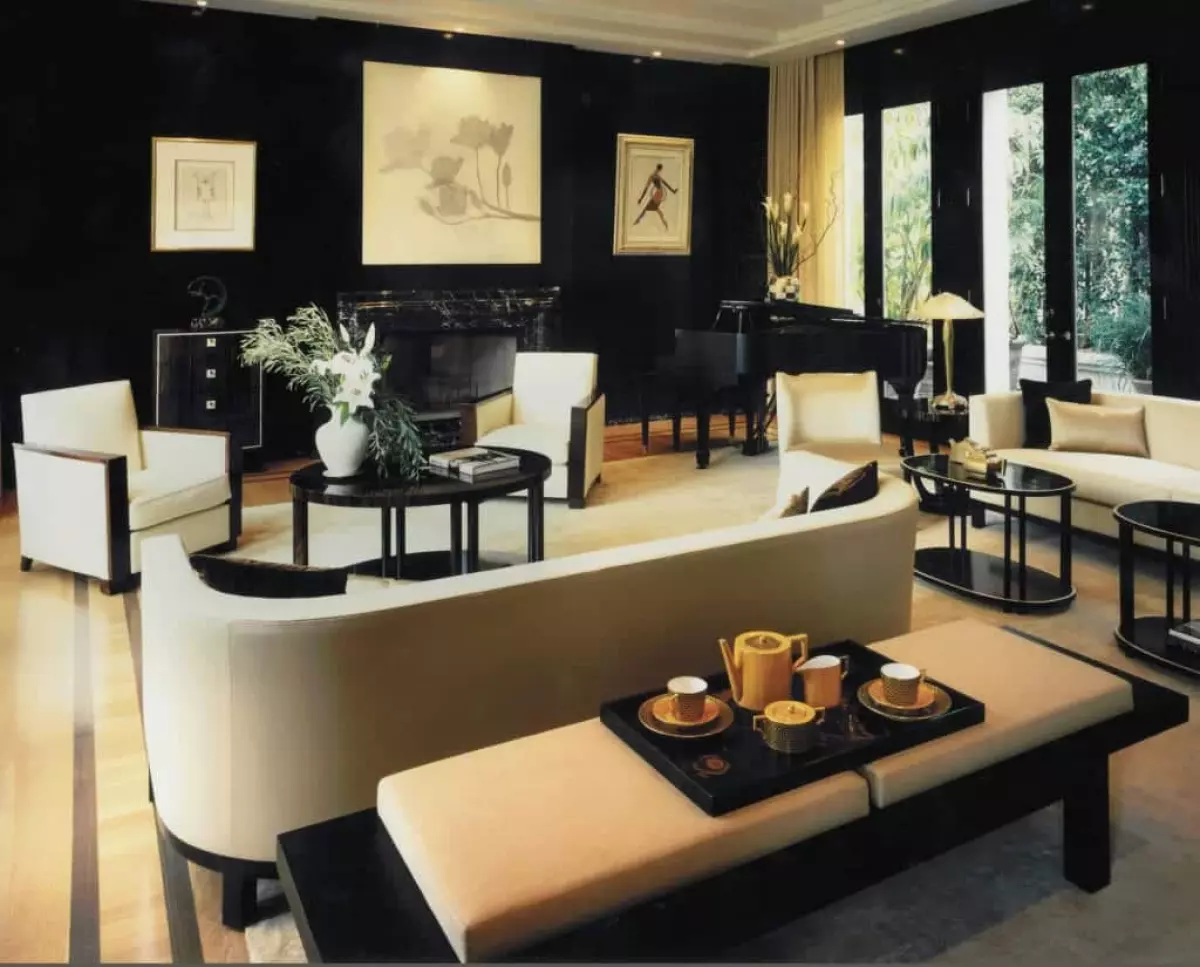 Source: annehauck.com
Source: annehauck.com
American Art Deco
Art Deco emerged in response to Art Nouveau before World War I, starting in Paris and appearing in posters and fashion magazines. American publications like Vogue, Vanity Fair, and Harper's Bazaar quickly embraced the trend. As Art Deco flourished in the United States, it became particularly prominent in the 1930s, with a distinctly American form of the style emerging. Despite the challenges of Prohibition and the Great Depression, Art Deco remained immensely popular during this time.
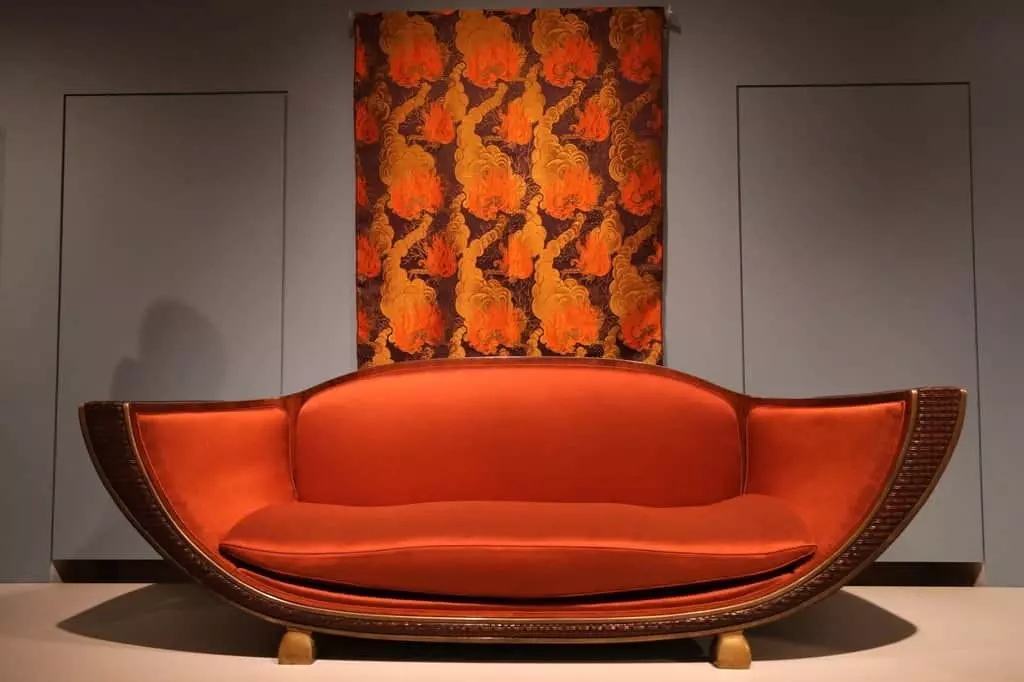 Gondola sofa by Marcel Coard, c. 1925 | Photo credit: Chang W. Lee | Source: The New York Times
Gondola sofa by Marcel Coard, c. 1925 | Photo credit: Chang W. Lee | Source: The New York Times
Art Deco became synonymous with glamour and luxury, thanks to Hollywood's influence. It found a home in cities like Los Angeles, Miami Beach, and South Beach. While it fell out of favor in Europe during the 1930s, Art Deco thrived in America, with theaters, homes, government buildings, and even cruise ships adopting the style. Iconic Art Deco designs include the Chrysler Building, Rockefeller Center, and Empire State Building.
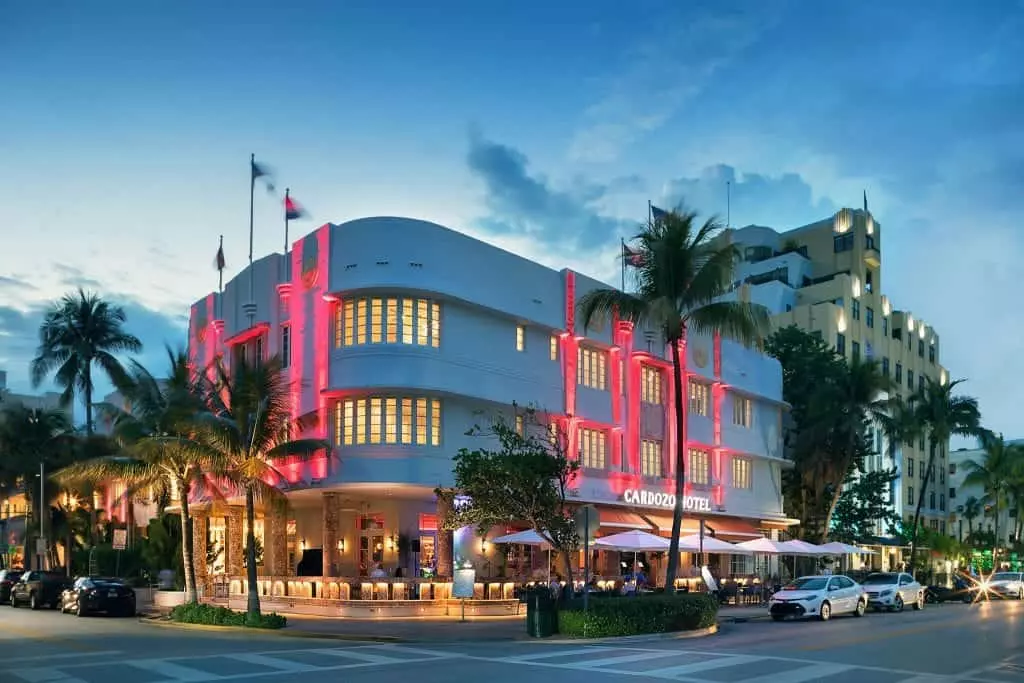 An example of Miami's Art Deco architecture | Photo credit: Maurizio Leoni | Source: Timeout
An example of Miami's Art Deco architecture | Photo credit: Maurizio Leoni | Source: Timeout
A Distinctly American Style
The development of Art Deco in America took a different path compared to Europe. When Paris hosted the Exposition Internationale in 1925, then-Secretary of Commerce Herbert Hoover declared that no Americans could present. Hoover believed that the U.S. had yet to develop a "new enough" art style that was distinctly American. However, he commissioned a group of well-known artists to attend the Exposition and apply what they saw to American design. The result was overwhelmingly popular, leading to the hosting of the "A Selected Collection of Objects from the International Exposition Modern, Industrial, and Decorative Arts" in the U.S. in 1926, exhibited in several major cities.
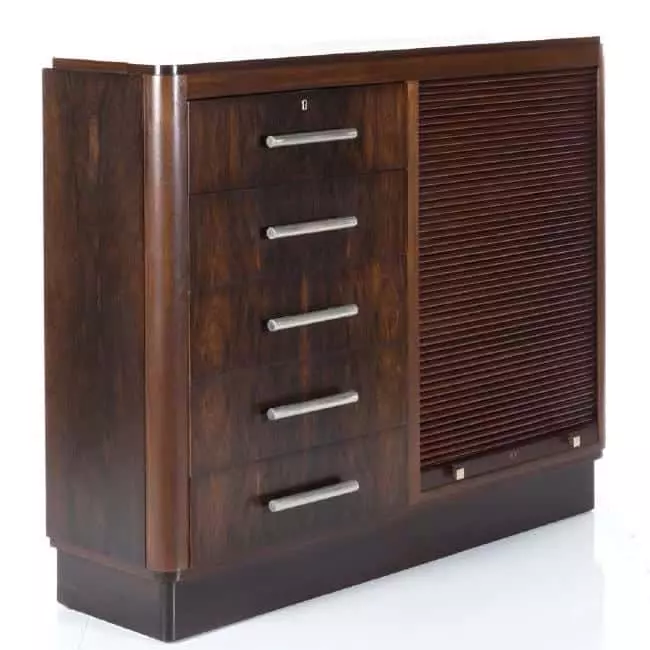 Source: worldsfaircommunity.org
Source: worldsfaircommunity.org
Designers also showcased American Art Deco designs at the World Fairs in Chicago (1933) and New York City (1939). Notably, corporations like General Motors and Ford built structures and pavilions for the New York Fair. Art Deco gained further popularity as Hollywood embraced its aesthetic, and skyscrapers incorporated Art Deco facades and interiors. Famous structures like the Chrysler Building, Rockefeller Center, and Empire State Building became iconic Art Deco designs.
The Great Depression
Despite the challenges posed by the Great Depression, Art Deco remained prevalent in American culture. The most severe economic downturn lasted from 1929 to 1931. Surprisingly, American Art Deco evolved from being a follower of trends to becoming a vanguard during this period. This shift led to Art Deco's second phase, which featured new characteristics that better represented the decade's austerity.
 Source: streamlinemodern.com
Source: streamlinemodern.com
Streamline Moderne
The inspiration for the first Streamline Moderne buildings in the U.S. came from supporters of the New Objectivity movement in Germany. Both Streamline Moderne and New Objectivity designers incorporated similar themes and stylistic elements in their works. Practicality and utilitarianism were prioritized over decoration. The fluidity and speed of modern transportation, such as cars, zeppelins, and cruise liners, influenced the smooth, long lines of Streamline Moderne.
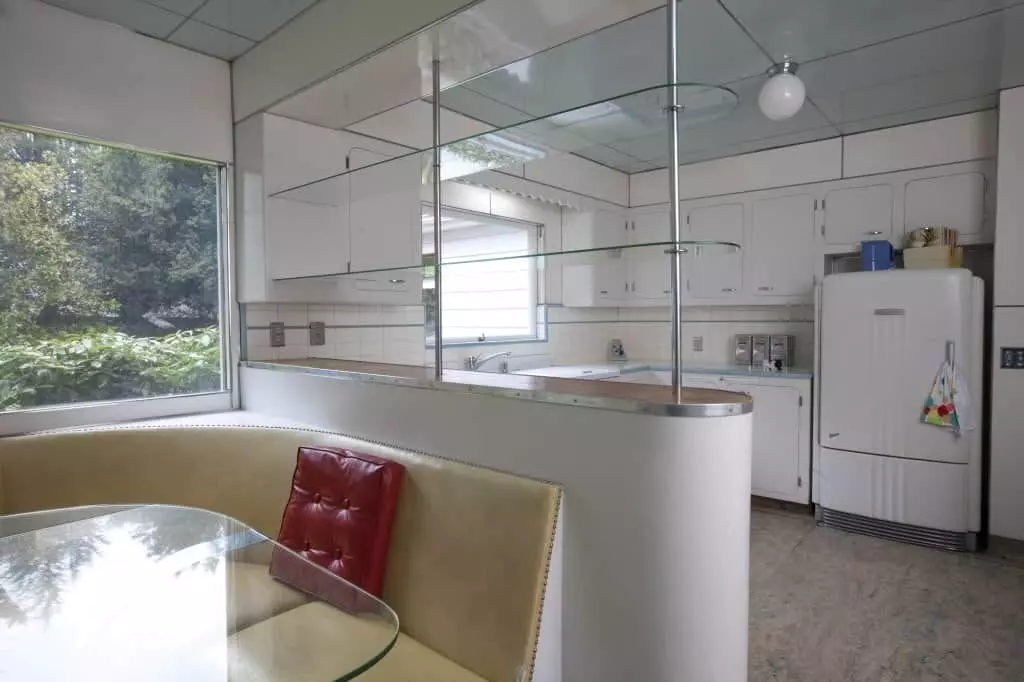 Example of Streamline Moderne interior in Southwest Portland, 1948 | Photo credit: Elliott Anderson | Source: oregonlive.com
Example of Streamline Moderne interior in Southwest Portland, 1948 | Photo credit: Elliott Anderson | Source: oregonlive.com
Streamline Moderne's characteristics include minimal ornamentation, streamlined curves, long horizontal lines, glass bricks, and sometimes nautical and circular designs like porthole-style windows. As technology progressed, Art Deco furniture became more accessible to the average person. Furniture crafted from exotic materials was replaced by affordable options made from concrete, glass, and chrome hardware. Color preferences also evolved, with off-white, beige, and natural tones replacing the vibrant Art Deco hues of the 1920s.
Art Deco Furniture
Art Deco furniture made in the 1920s was more expensive compared to those made in the 1930s. The advent of assembly lines enabled the production of cheaper pieces, making Art Deco furniture more affordable and accessible to a wider audience.
Characteristics
Art Deco furniture is known for its chevrons, zig-zags, and clear lines. However, it incorporates several other elements as well. Metallic, neutral, and vibrant colors resembling machinery were commonly used, including black and white, silver, gold, metallic blue, dark gray, and platinum. Inlaid wood and reflective polishes gave Art Deco furniture and lighting fixtures a lustrous and glossy finish.
 Art Deco 18-Drawer Dental Cabinet by American Cabinet Co., c. 1930s | Source: 1stdibs
Art Deco 18-Drawer Dental Cabinet by American Cabinet Co., c. 1930s | Source: 1stdibs
American Art Deco drew influences from various sources, including Art Nouveau, Bauhaus, Cubism, Native American art, Egyptian motifs, and classic antiquity. In addition, quintessential Art Deco motifs included naked women, animals, foliage, and sunbeams.
Materials
Luxurious materials like ivory, mahogany, and animal skins were commonly used in 1920s Art Deco furniture, making them more expensive. In Art Deco's second phase, cheaper building materials became available due to increased manufacturing. Strong metallic materials, such as chrome and stainless steel, were used to glorify the Machine Age and signify a modern era. Other materials included glass, mirrors, aluminum, and Bakelite. However, designers still incorporated luxury materials like ivory, horn, and zebra skin for more elegant designs.
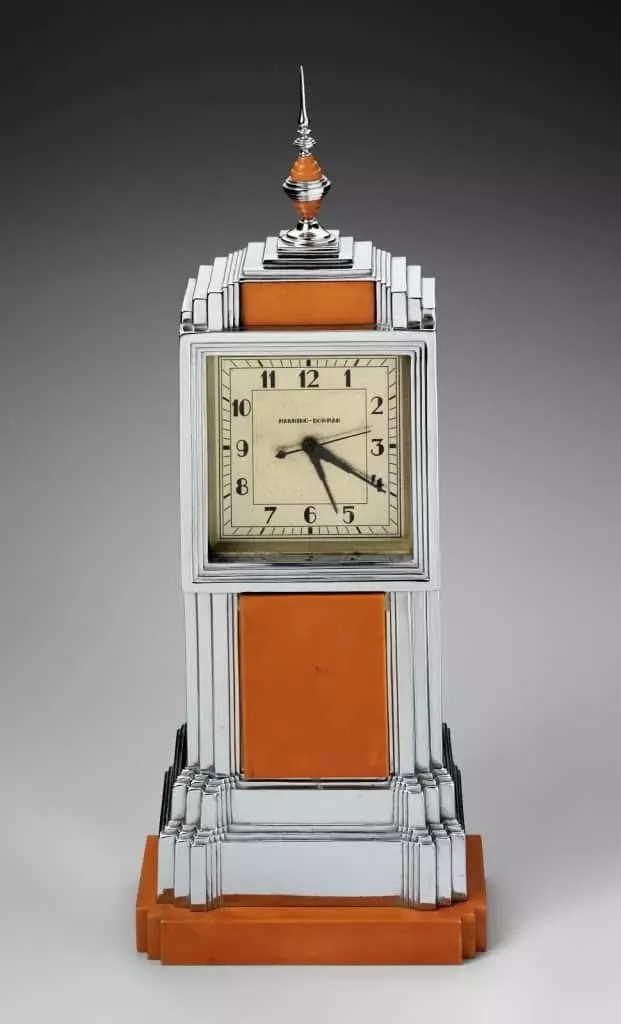 Manufactured by the Manning Bowman Company, c. 1932 | Source: collections.mfa.org
Manufactured by the Manning Bowman Company, c. 1932 | Source: collections.mfa.org
Waterfall Furniture
Waterfall furniture, synonymous with Art Deco furniture, made its debut at the Paris Colonial Exposition in 1931. It features sharp, rounded drops that mimic a running waterfall, treated with a blonde veneer or walnut polish. Waterfall furniture became popular for bedroom sets and mass-market production during the 1930s and 1940s. Hardware made from Bakelite and brass, illuminated or frosted panels, and oversized mirrors with engraved trim were common features. Plywood and imported woods like Carpathian elm and golden padouk were used, with corners often rounded in more elegant pieces.
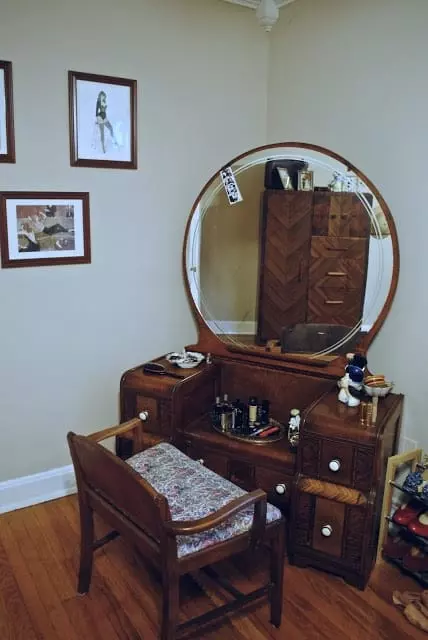 Art Deco Waterfall Cedar Chest Mirror by Tri-Bond | Source: 1stdibs
Art Deco Waterfall Cedar Chest Mirror by Tri-Bond | Source: 1stdibs
Influential Designers
Several designers played significant roles in shaping American Art Deco.
Paul T. Frankl (1886 - 1958)
Paul T. Frankl moved to New York City in 1914 with the goal of creating a distinctly American style. He began as an architect but later became a painter and furniture designer. Frankl's skyscraper style in the 1920s and his shift to metal furnishings in the 1930s laid the foundation for American modernism. He established the Skyscraper Furniture company, which became a hub for American modernist ideas. Frankl designed comfortable, informal pieces for Hollywood socialites in the 1930s and was one of the first to use biomorphic designs. By the 1950s, he became a significant manufacturer of mass-produced furniture.
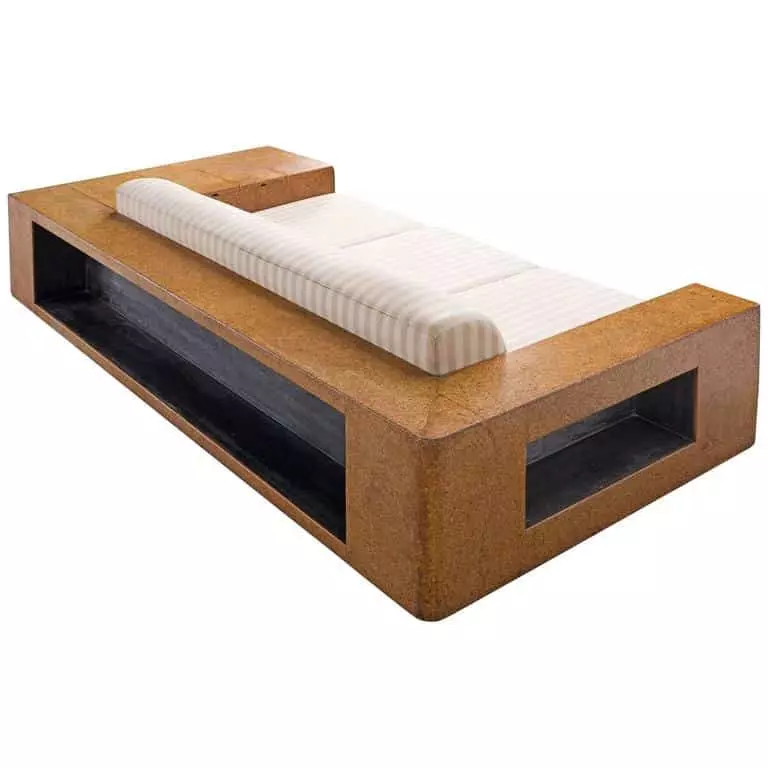 Skyscraper table, c. 1924 | Source: myhistoryfix.com
Skyscraper table, c. 1924 | Source: myhistoryfix.com
Donald Deskey (1894 - 1989)
Donald Deskey is considered a master of the late Art Deco style and a leading modern designer. He made significant contributions to Art Deco as it evolved into Streamline Moderne and invented the decorative plywood technique used in waterfall furniture. Deskey also designed the interior of Radio City Music Hall, among other notable works.
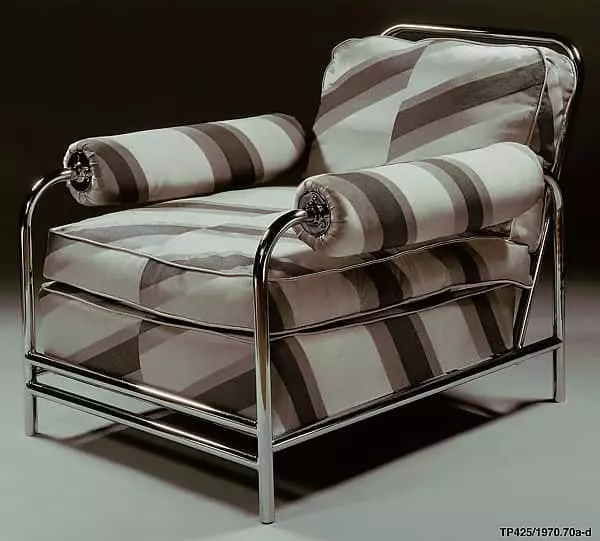 Streamlined Black Lacquer and Burled Walnut Sideboard by Donald Deskey | Source: 1stdibs
Streamlined Black Lacquer and Burled Walnut Sideboard by Donald Deskey | Source: 1stdibs
 Armchair, c. 1929 by Donald Deskey | Source: metmuseum.org
Armchair, c. 1929 by Donald Deskey | Source: metmuseum.org
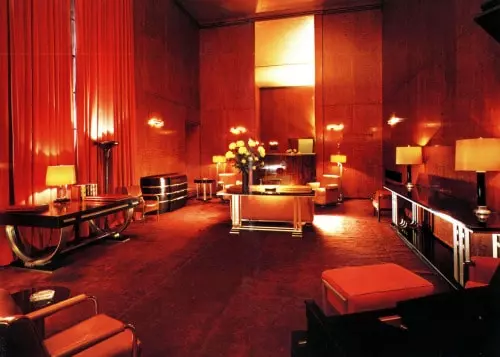 New York apartment for the manager of Radio City Music Hall, designed by Donald Deskey, 1933 | Source: Dtxmcclain
New York apartment for the manager of Radio City Music Hall, designed by Donald Deskey, 1933 | Source: Dtxmcclain
Art Deco in the 21st Century
The influence of Art Deco is still evident today, with its distinguishing characteristics easily recognizable in many objects. The style adds a touch of luxury and glamour, which never goes out of fashion.
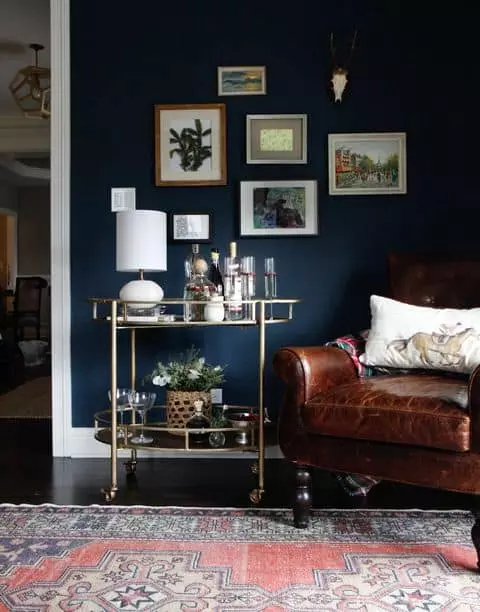 Source: ElleDecor
Source: ElleDecor
Styylish
If you're looking for the perfect antique furniture to make your house feel more like home, be sure to check out the Shop. For more antique furniture history, stylish design tips, and more, head over to the Blog!

















